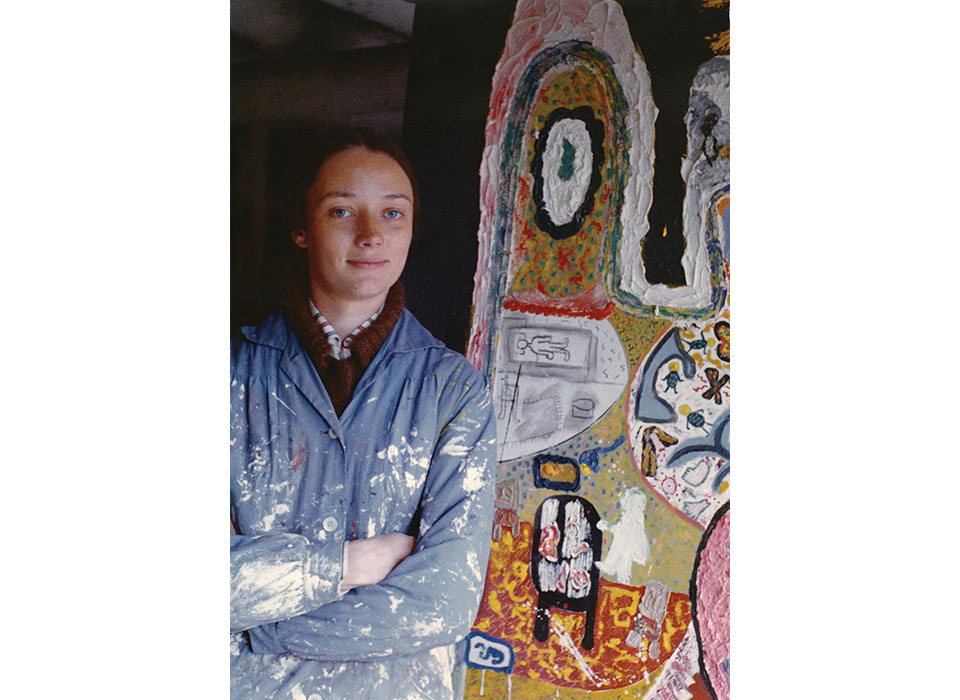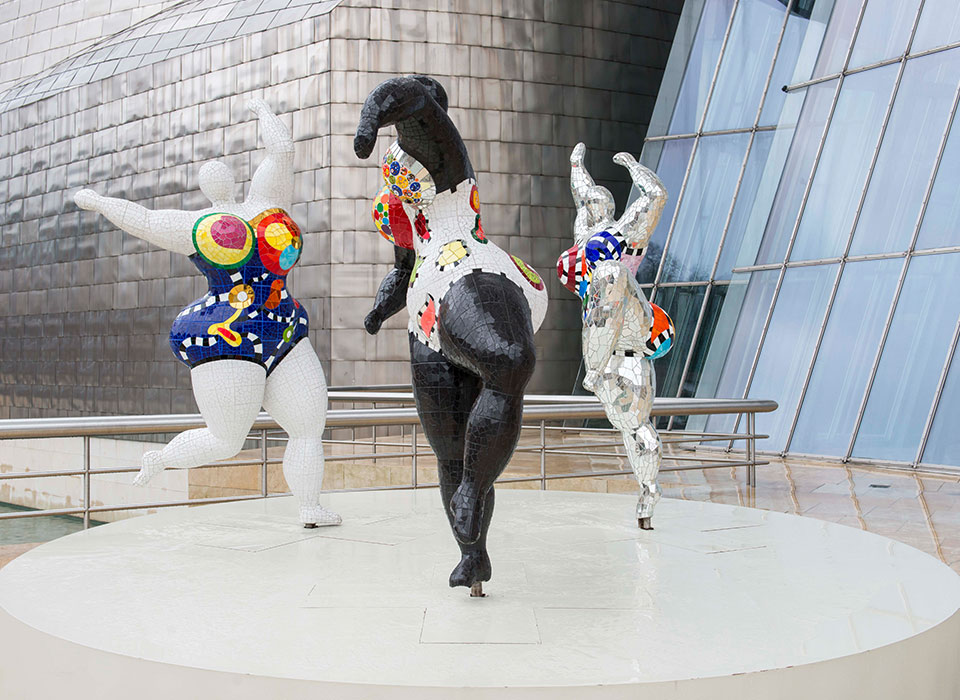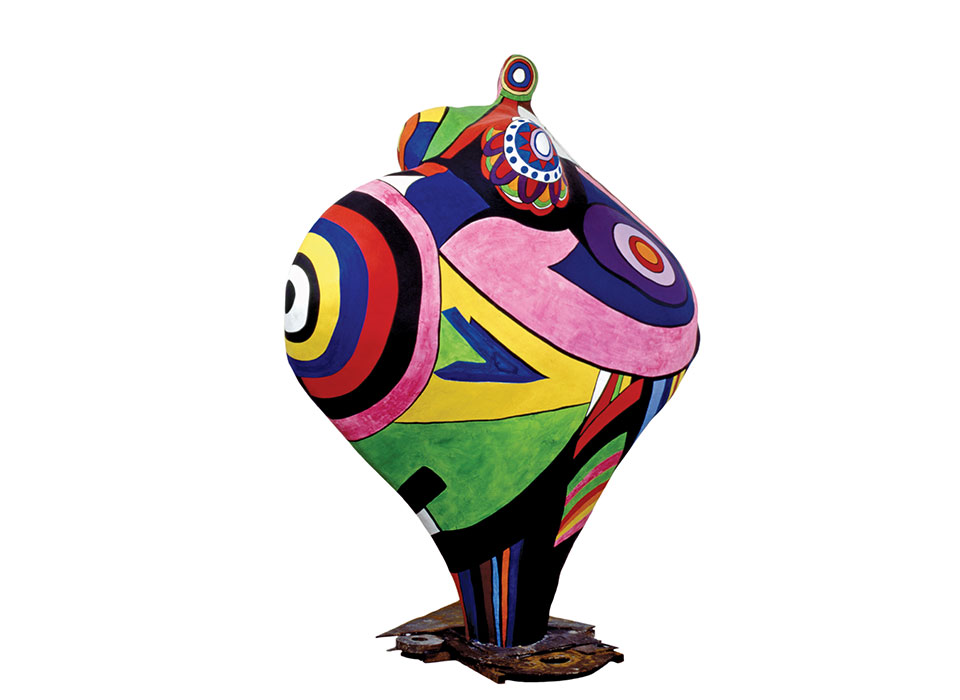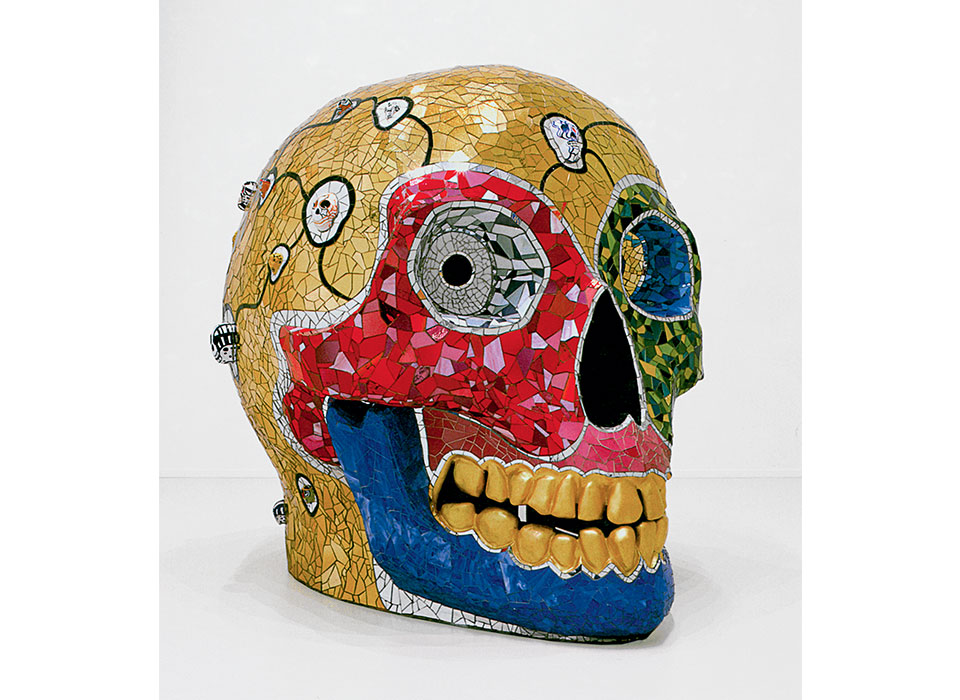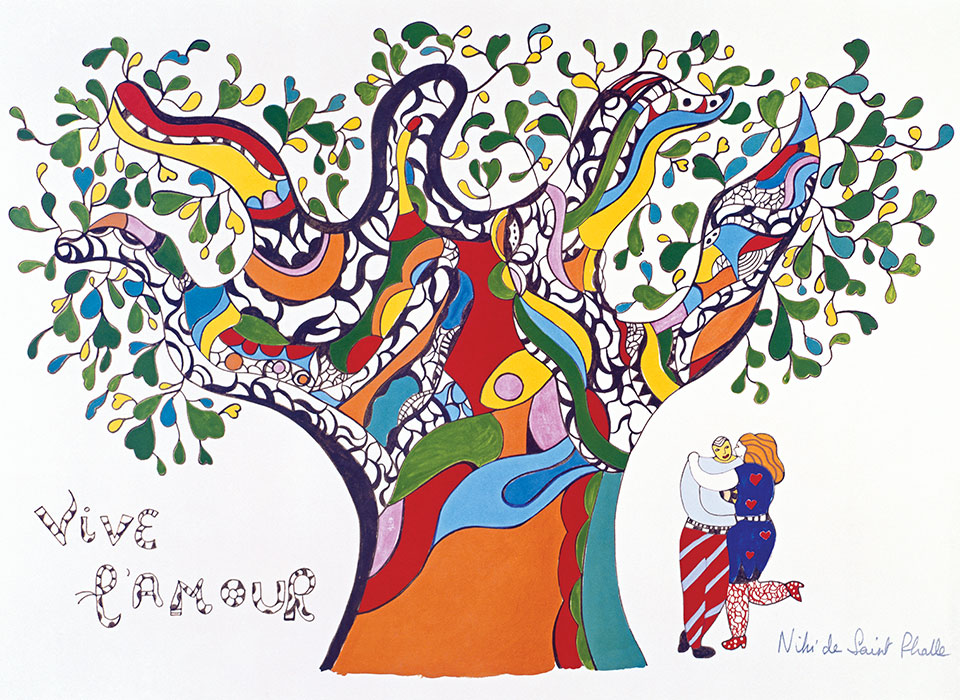Born outside of Paris and partially raised in New York, de Saint Phalle led a life that was as eclectic, colorful and attention-grabbing as her works. She was a model, appearing in Vogue, Harper’s Bazaar and Life magazines. She got into the arts after suffering a nervous breakdown and took up painting as therapy, and first came into prominence in the Sixties for her “shooting paintings” — here, she fired at plaster panels covered in bags of paint with a .22-caliber rifle, sometimes enlisting friends like Robert Rauschenberg to take shots. Nowadays de Saint Phalle is most famous for her curvy, plump, almost cartoonish “nanas,” inspired by a friend’s pregnancy; at the exhibit, you’ll find them sitting in front of a vanity, playfully twirling and dancing or posing suggestively, hand on hip. (In Tuscany, you can also find them in her fantastical sculpture garden Il Giardino dei Tarocchi, which features 22 figural monuments loosely based on Tarot cards.)
Creatively, de Saint Phalle left no stone unturned; she did everything from paintings, sculptures and film to graphic design, furniture and jewelry. She even had her own eponymous perfume and once wrote a book about AIDS that was distributed throughout schools in France in the Eighties. “I had to prove that a woman could do something important,” she once told the Los Angeles Times. “I wanted to show that we were capable of doing more than needlework.” Niki de Saint Phalle is on view till June 7th.

